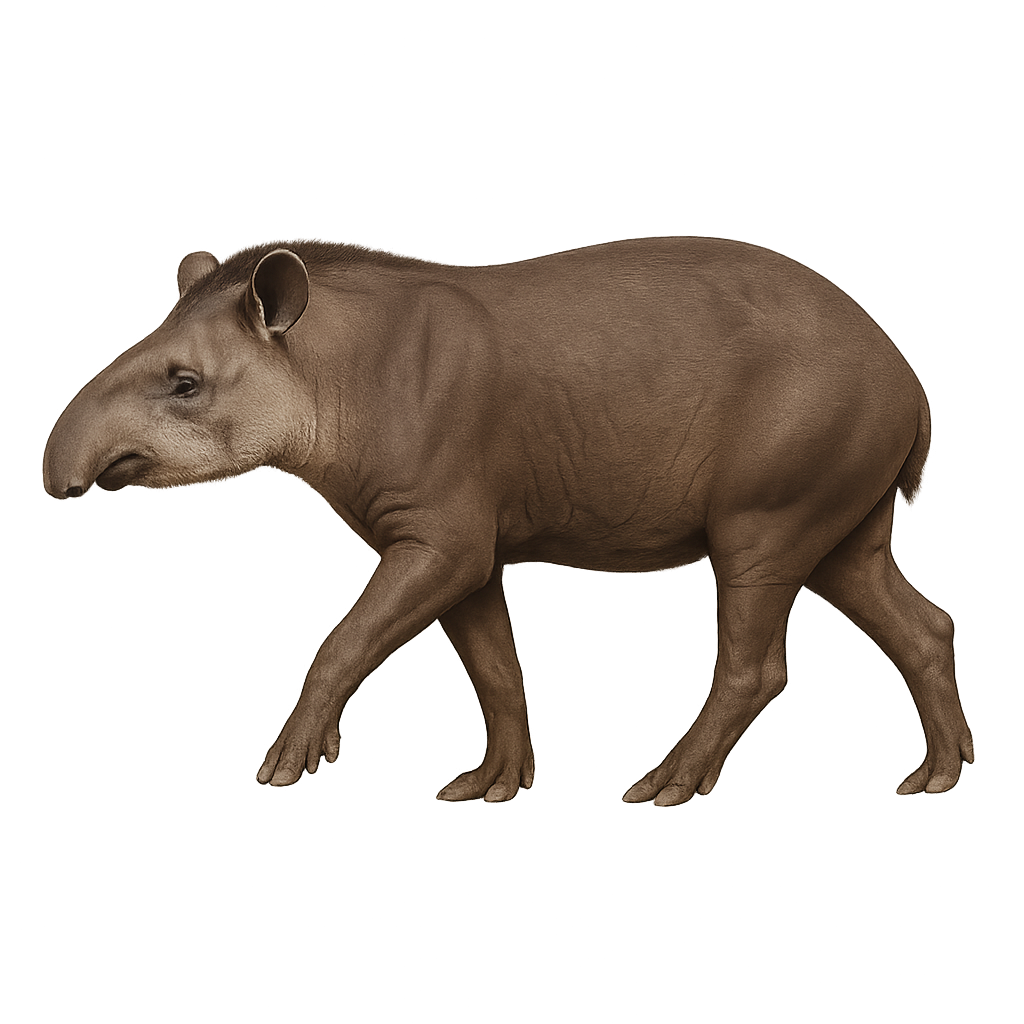Your wildlife photography guide.
Explore the brazilian tapir in detail, study its behavior, prepare your shots.
Where to observe and photograph the brazilian tapir in the wild
Learn where and when to spot the brazilian tapir in the wild, how to identify the species based on distinctive features, and what natural environments it inhabits. The WildlifePhotographer app offers tailored photography tips that reflect the brazilian tapir’s behavior, helping you capture better wildlife images. Explore the full species profile for key information including description, habitat, active periods, and approach techniques.
Brazilian tapir
Scientific name: Tapirus terrestris

IUCN Status: Vulnerable
Family: TAPIRIDAE
Group: Mammals
Sensitivity to human approach: Suspicious
Minimum approach distance: 20 m
Rut period: April to June
Gestation: 380-400 jours
Births: May to July
Habitat:
Tropical forests, wetlands, rivers
Activity period :
Mainly active at night, generally discreet during the day.
Identification and description:
The Brazilian tapir, also known as the Amazonian tapir, is a large herbivorous mammal that lives in the humid tropical forests and wetland areas of the Amazon basin. It is easily recognized by its massive body, short legs, and elongated trunk-like nose, which it uses to grasp branches and leaves. The Brazilian tapir is primarily nocturnal and solitary, feeding mainly on fruits, leaves, and roots. While rather calm, it is an excellent swimmer and often spends time in water to cool off or move around. This tapir is currently listed as vulnerable due to habitat loss and hunting.
Recommended lens:
400 mm – adjust based on distance, desired framing (portrait or habitat), and approach conditions.
Photography tips:
Photograph the Brazilian tapir from a distance using a telephoto lens, especially when it is feeding or moving through its natural habitat. Since this mammal is nocturnal, it is best to photograph it at dusk or dawn. Be patient and discreet, as it can easily be frightened if you get too close. Use soft, natural lighting to avoid harsh shadows.
The WildlifePhotographer App is coming soon!
Be the first to explore the best nature spots, track rutting seasons, log your observations, and observe more wildlife.
Already 1 432 wildlife lovers subscribed worldwide

